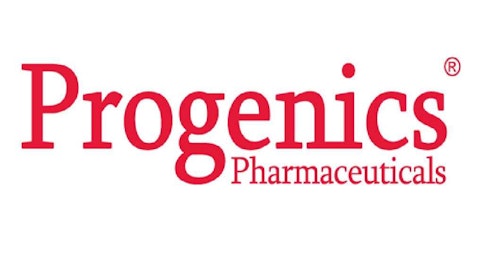Thomas Heineman: Yeah. So — well, so for the for the Precision Promise study, which is the gemcitabine, nab-paclitaxel pelareorep and atezo in that study, the protocol — again, this protocol has been — was written in — with guidance from the FDA and has been highly vetted. In that protocol, there is no treatment past progression, right? We are also doing the — adding the additional arm to the GOBLET study, where we’re combining pelareorep with modified FOLFIRINOX plus or minus atezolizumab. And in that study, we do have the option to treat past progression.
John Newman: Okay. Great. Thank you.
Operator: Our next question comes from the line of Soumit Roy from Jones Research. Please go ahead.
Soumit Roy: Good morning, everyone and congrats on all the progress. Going back to the ESMO presentation on the pancreatic data, it looks like the — would the real comparator study would be NAPOLI trial with and the [indiscernible] and the OS is kind of coming close to it. So I’m curious, in the frontline setting, are you thinking the modified FOLFIRINOX arm is a better option where you can see a very clear benefit in a larger patient cohort? What’s your thinking about?
Matt Coffey: I read your report, thank you for that by the way. Looking at the NAPOLI study, I would argue that, that patient population since they’ve not had previous exposure to any chemotherapy and they were predominantly not in a metastatic setting as to our — I wouldn’t say that’s an apples-to-apples comparison. Also, it was an odd study and that it’s basically a derivative of modified FOLFIRINOX and then comparing it to nab-paclitaxel. I would have thought a better comparator would have been modified FOLFIRINOX as the comparator arm because nab-paclitaxel basically, the thinking is it’s not as active, but you don’t pay a TOCs penalty in the way that you would with modified FOLFIRINOX. So I’d argue the NAPOLI study has a few fundamental differences and flaws that make the comparison difficult.
In terms of PanCAN interests with modified FOLFIRINOX, there is a lot of clinicians that prefer it because there is a thinking that it is more active, although recent publications at ESMO from the — I’m just trying to think of the group that did, it’s SOLTI, pardon me, is the group that published it would suggest that maybe the difference isn’t as much as you could see. That being said, modified FOLFIRINOX is going to be used as one of the frontline treatment options. PanCAN did want to study it to see if it is more active, if we can enhance that activity with pelareorep and atezolizumab but it is an experiment. We’re very delighted that PanCAN provided a $5 million grant for us to do this, but we won’t know the activity until we actually treat it.
I mean I believe it’s going to be more active. But on the flip side, it’s a lot more drugs. The toxicity could be unacceptable. We’ve never seen that before, but it is possible. But it could also be that the modified FOLFIRINOX and interferes with the T cell response as well because there is so many drugs present. So we’re running the experiment to see what the activity looks like. What’s nice about that one is it is a randomized protocol. So it’s modified FOLFIRINOX, pela plus or minus atezolizumab. So we’ll have a better look at the contribution. But again, I’m not anticipating there to be any toxicities with pela because it is so well tolerated. To date, pela, atezolizumab combinations have been well tolerated as well. But with the new drug combination, there’s always a little bit of uncertainty.
But certainly, we have the backing of a very prestigious group like PanCAN to study this. So the belief is that we’ll be more active, and we’ll know later next year. Tom, do you have anything to add about that NAPOLI study? Tom, you might be on mute.
Thomas Heineman: Yeah. Terribly sorry. Yes, the NAPOLI study was certainly an interesting study, but it didn’t really — for the reasons, Matt mentioned, it didn’t really answer all the questions. And I think the pela+FOLFIRINOX study will be very interesting. And it’s not that there’s an obvious reason why pela should work better with FOLFIRINOX, although — but we have reasons to believe that it may work with FOLFIRINOX and some clinicians for different reasons in different parts of the world simply prefer FOLFIRINOX over the gemcitabine and nab-paclitaxel for some of their patients. So by investigating pela in combination with the modified FOLFIRINOX we are able — we would be able to cover the entire pancreatic cancer first-line population, right?
So it expands our ability to provide benefit to patients regardless of physicians own particular perspectives on the standard of care treatment. And also just to comment on the safety side, we have never combined pela with modified FOLFIRINOX. But in other studies, we have combined pela with the components of FOLFIRINOX. So, although you never know for sure, we don’t have any reason to believe that it will behave poorly with any of the components of the FOLFIRINOX.
Soumit Roy: Understood. That was very helpful. Another question is I know it’s probably not an enrollment criteria, but are you looking into the — any biomarkers of the 13 patients in terms of genetic biomarker or PD-L1 level, something to explain the non-responders or patients who are staying on a shorter duration of response, anything you’re seeing there?
Matt Coffey: The one biomarker that I’m very interested in is the expansion of the tumor-infiltrating lymphocytes that we’ve demonstrated correlates to tumor response. So for anyone not familiar with the story, we were able to — and it was a question of Roche [indiscernible] actually, they said, is there any correlation with the existing T cells and tumor response. So we went back — and again, this is all the TCR work. We looked at the resident T cells within the tumor or the TILs at baseline. And the reason for that is the assumption is if you have inflammatory cells within the tumor that are most likely directed against the tumor. So this is an auto reactor T cell that’s become exhausted. So we wanted to look what happens to those TILs post treatment.
And what we were able to demonstrate is in the responders, those TILs, we could see those clones expanding in the blood. So we know we’re actually getting an expansion of preexisting T cells that do recognize the tumor, and we can look at that as early as two to three weeks. So we can immunologically say these patients had an exhausted T cell clone that was useful in eliminating the tumor and the combination of atezolizumab and pela, we’re able to expand those populations to eliminate the tumor more effectively. So it speaks to the immunological status. We can measure it quickly, and it appears to be reproducible. So I think for us, it allows us really to start guessing which patients are going to have better immunological outcomes. Tom, you’re closer to the protocol.




